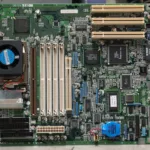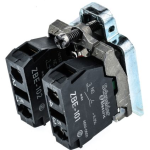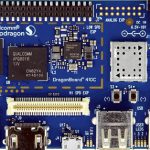
Introduction
Power electronics play a significant role in the modern world, enabling the efficient conversion, control, and management of electrical energy. Researchers and engineers are constantly seeking more efficient, reliable, and sustainable solutions. One such groundbreaking advancement is the use of Enhanced Silicon Carbide (SiC) technology– a game-changer in the power electronics industry, offering superior performance and numerous advantages over traditional silicon-based counterparts. This article uncovers the key features, benefits, and potential applications of Enhanced Silicon Carbide technology in revolutionising power electronics.
Understanding Silicon Carbide Technology and Power Electronics
Silicon Carbide is a compound semiconductor material comprising silicon and carbon, with a rich history from decades. However, its true potential in power electronics has been unlocked recently. SiC offers several advantages over traditional silicon-based power devices, making it a compelling alternative for various electronics and manufacturing applications. It boasts a higher bandgap energy and breakdown voltage, lower on-resistance, and superior thermal conductivity. These characteristics enable it to handle higher voltages, temperatures, and currents while minimising energy losses and improving overall efficiency and reliability.
Power electronics is an electrical engineering branch that deals with the conversion, control, and management of electrical power. It involves the design, analysis, and application of electronic devices and circuits for efficient conversion and control of electric power in various applications.
How Silicon Carbide Technology Drives Power Electronics Revolution: Uncovering Their Potential Benefits
SiC technology has been a significant driver in the power electronics revolution due to its unique properties and advantages, including:
Higher Efficiency and Power Density
One of the most significant advantages of SiC technology lies in its ability to operate at higher frequencies. This capability makes the design of power electronic systems with higher power densities. The SiC devices’ higher switching speeds significantly reduce power losses, making them ideal candidates for high-efficiency applications.
High-Temperature Applications
Traditional silicon-based devices suffer from performance degradation and reliability issues at high temperatures, limiting their use in harsh environments. Silicon Carbide, on the other hand, thrives in extreme conditions, enhancing the device’s efficiency and extending its lifespan. With its superior thermal properties, SiC technology can withstand higher temperatures, making it suitable for demanding operating temperatures, such as aerospace, automotive, and industrial applications.
Lightweight and Smaller Size
SiC devices require smaller passive components due to reduced switching losses. Power electronic systems utilising SiC technology can be significantly lighter and more compact than their silicon-based counterparts. This size and weight reduction benefit numerous industries, including aerospace, transportation, and renewable energy, where space constraints and weight considerations are paramount.
Facilitating Electric Vehicles–EVs
The electric vehicle revolution heavily relies on efficient power electronics–delivering power from the battery to the motor. SiC technology provides robust solutions for the EV industry by improving energy efficiency, enabling faster charging, and making lighter vehicle designs. The higher switching frequencies and lower losses of SiC-based power modules translate to longer driving ranges, making EVs more attractive, adaptable, and practical for consumers worldwide.
Promoting Swift Adoption of Renewable Energy
Integrating renewable energy sources such as solar and wind into the grid harness robust power electronic systems. Silicon Carbide technology can handle fluctuations in power generation and helps increase the efficiency of inverters and converters used in renewable energy systems. By optimising energy conversion and minimising losses, SiC-based power electronics ensure a smooth and reliable integration of renewable energy into the grid.
Enhancing Grid Stability and Resilience
With escalated decentralised power generation and renewable sources, maintaining grid stability has become a significant concern. The improved reliability and performance of SiC devices contribute to the electricity grid’s overall stability by enabling better grid management, reactive power compensation, and fault detection capabilities, ensuring a stable and resilient power distribution system.
Overcoming Challenges and Future Prospects
Silicon carbide technology holds great promise as an emerging technology; however, there are challenges to address. For instance, the cost of SiC devices remains higher than traditional silicon-based ones, although continuous research and production advancements are driving costs down. Further research is required to optimise material properties and structure complexity to maximise their potential for exciting future prospects, including 5G, aerospace and defense, EVs, renewable energy, and more.
The Final Remarks
Enhanced SiC technology is an indispensable option for the next generation of power electronics solutions. Its enhanced properties, including higher efficiency, higher power density, wider bandgap, excellent thermal conductivity, and better high-temperature performance, make SiC technology a game-changer in various industrial applications. With further technological advancements and developments, we can expect further innovations in SiC technology, shaping a greener and more electrified future.




















